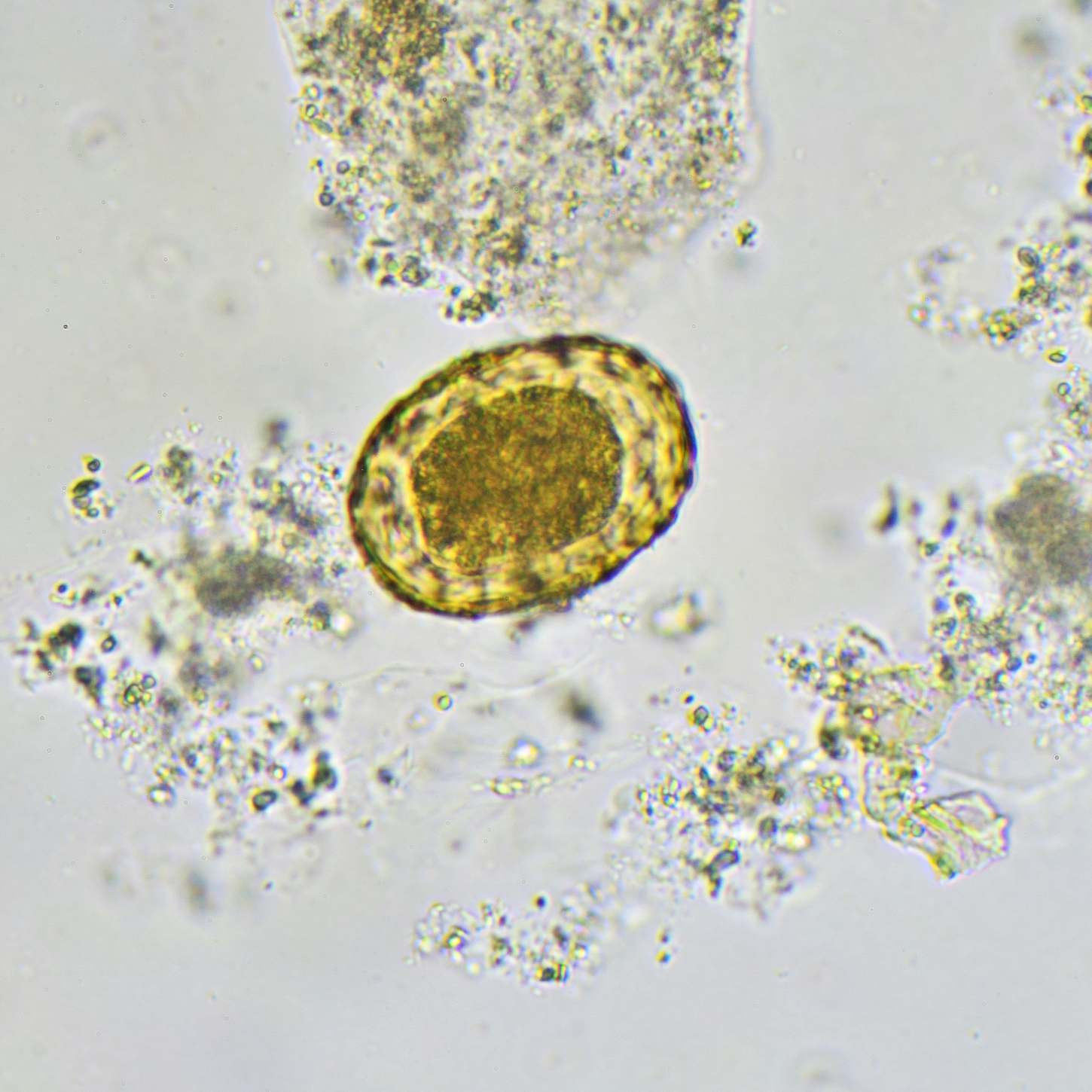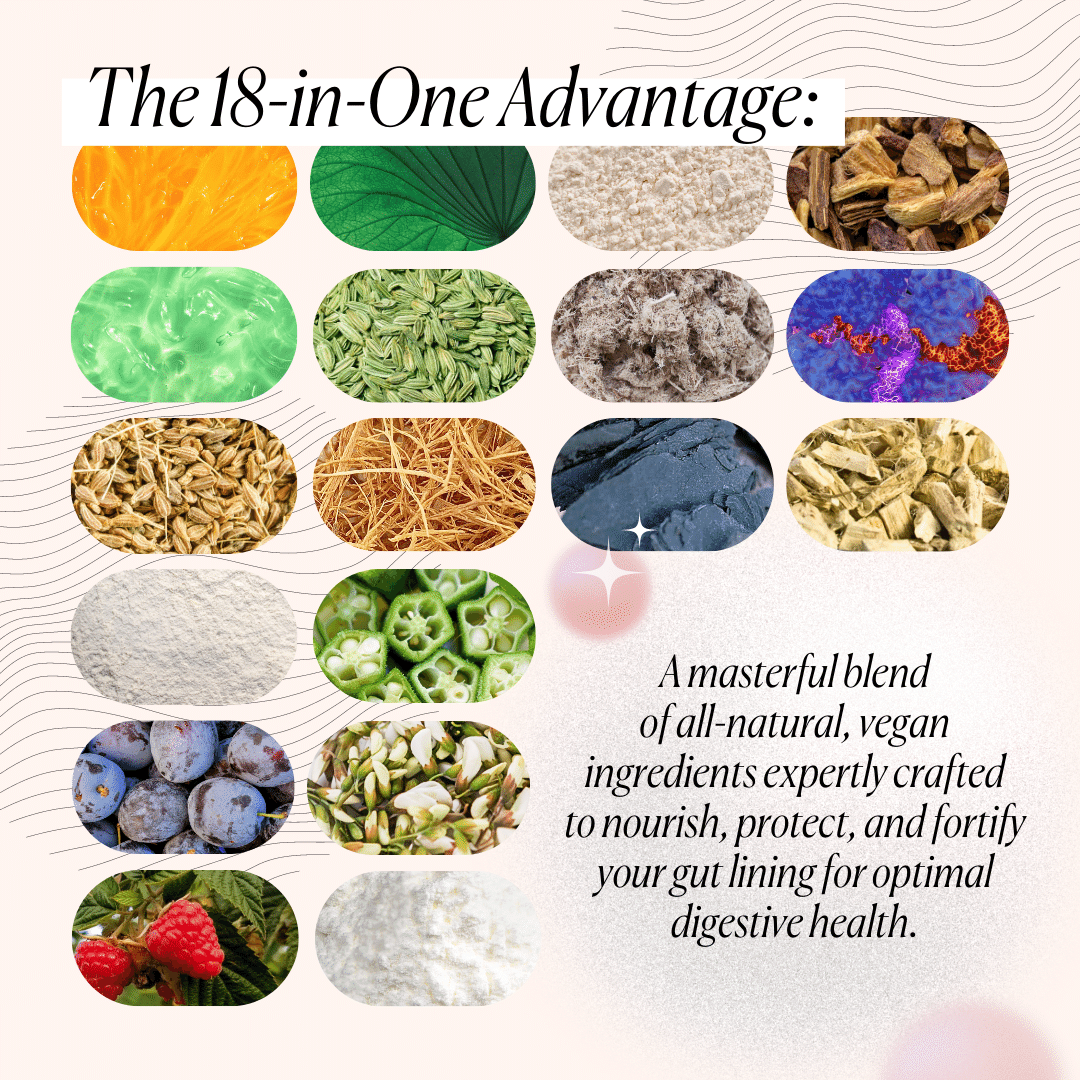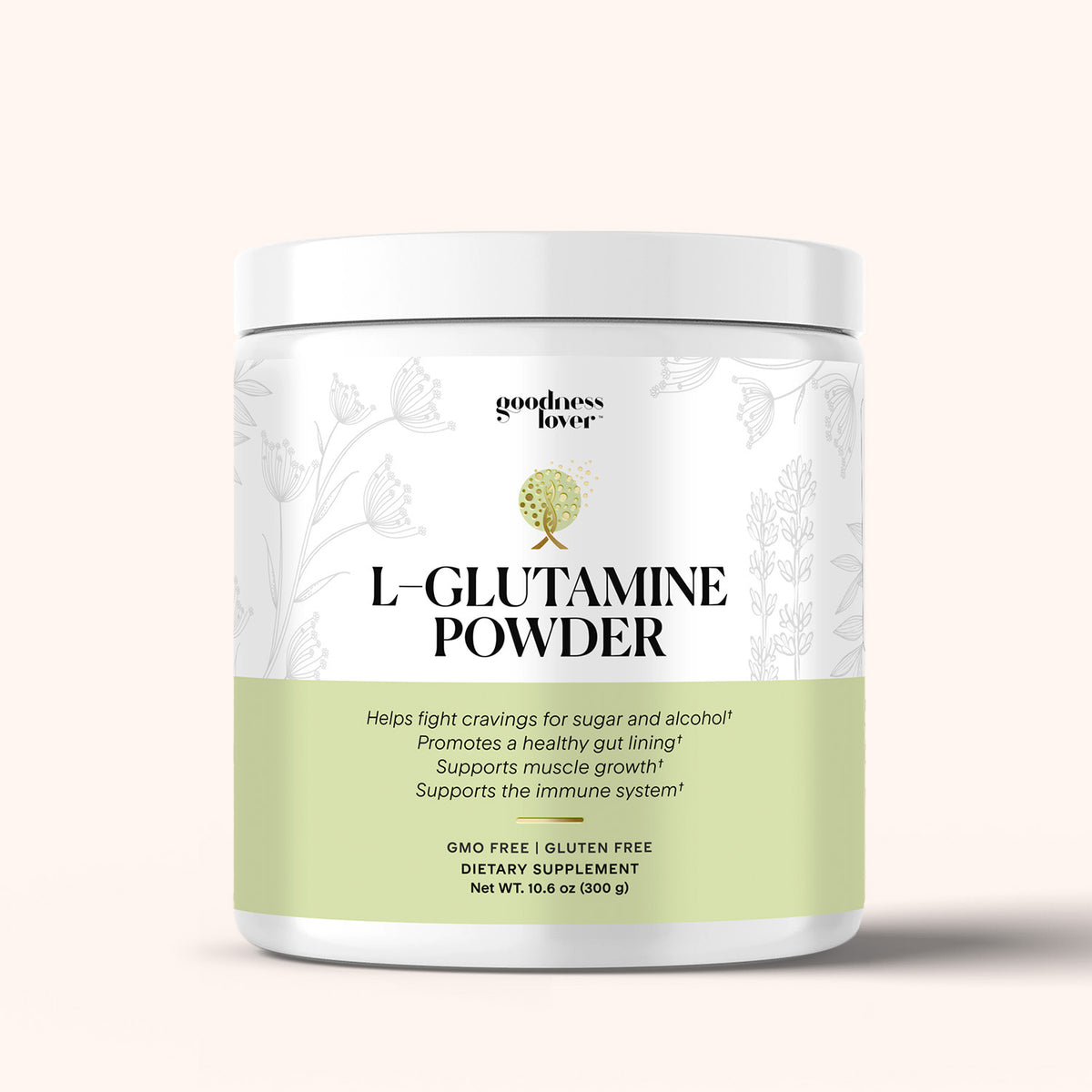So what’s the deal with all this news about glyphosate? I mean, it’s just a weed killer, right? How bad can it be?
Well, if you are concerned about the safety of the food you eat and feed to others, you might want to read closely what I’m about to share with you.
There’s a reason why some countries, such as Austria and the Netherlands, have banned or heavily restricted the use of glyphosate.
Not only does it have considerable effects on the environment, but accumulating research shows it has significant effects on human health.
But before we dive into the science, let’s examine what glyphosate is.
Table Of Contents:
What is glyphosate?
Also known as Roundup, glyphosate is perhaps the most well-known and widely used herbicide in the US. Herbicides are types of pesticides that are chemicals used largely in agriculture to stop pests from destroying crops.
They are toxic by nature.
There are over 1,000 different pesticides used around the world. Every year, the United States uses over one billion pounds of pesticides! Some of the most commonly used pesticides include atrazine, chlorpyrifos, neonicotinoids, 1,3- D (1,3-Dichloropropene), 2,4-D (2,4-Dichlorophenoxyacetic acid), and glyphosate.
Genetically modified organisms (GMOs) have drastically increased the overall use of pesticides. Some GMO plants have been biogenetically engineered to produce pesticides themselves, while others have been modified to be resistant to herbicides. As a result, there has been a significant increase in the use of pesticides across the world, in particular glyphosate.
Since the late 1970s, the volume of glyphosate-based herbicides (GBHs) used has increased approximately 100-fold. Currently, about 150,000 tons are sprayed on US crops yearly. Since the early 90s, glyphosate has been detected in human urine, and today, at least 70% of Americans test positive for glyphosate.
Yikes!
In recent years, a growing body of scientific research has identified extensive environmental and health risks associated with the widespread use of glyphosate. Glyphosate, which was once heralded for its use in agriculture, is now under fire from scientists and public interest groups alike.
In 2016, the Environmental Health Journal produced a Statement of Concern calling for a “fresh and independent examination” of glyphosate-based herbicides after the World Health Organization concluded glyphosate to be a probable human carcinogen.
A 2019 Statement by the FIGO (International Federation of Gynecology and Obstetrics) Committee on Reproductive and Developmental Environmental Health concluded, “we recommend that glyphosate exposure to populations should end with a full global phase out.”
Glyphosate is no laughing matter. Let’s wade through some of the science behind this hazardous substance and investigate how it impacts our health as well as the environment. 
Glyphosate’s adverse effects on human health
-
Cancer
Glyphosate has attracted considerable attention in recent years for being the subject of more than 100,000 cancer lawsuits. Bayer, the company that purchased Monsanto (the original producer of glyphosate), has agreed to pay billions of dollars in attempts to settle these suits; however, more are being filed every day.
The EPA (Environmental Protection Agency) issued a report in 2016 that concluded that glyphosate was “not likely to be carcinogenic to humans” at doses relevant to human health.
However, just one year earlier, after a comprehensive assessment by experts from the World Health Organization's IARC (the International Agency for Research on Cancer), glyphosate was classified as “probably carcinogenic to humans”, with particularly strong links identified between it and non-Hodgkin lymphoma. This put the weed killer in the same category as arsenic and asbestos.
In early 2020, reports indicated that 24 studies submitted to German regulators in order to verify the safety of glyphosate were provided by a laboratory with an alleged history of fraud and misconduct. In July 2021, a comprehensive evaluation of 53 glyphosate studies by pesticide companies revealed that the majority failed to meet international standards for scientific integrity and were poorly equipped to detect potential cancer risks.
The research to support the safety of glyphosate just doesn’t hold up.
In 2019, a meta-analysis was published that reported a “compelling link” between glyphosate-based herbicides and non-Hodgkin lymphoma. The researchers found that exposure to Roundup raised cancer risks by 41 percent!
In June 2022, EPA’s conclusion that glyphosate poses no “unreasonable risk” to human health was rejected by the Ninth Circuit Court of Appeals and in September, EPA finally withdrew its statement on glyphosate. The lawsuits are ongoing.
-
Endocrine disruptor and a possible teratogen
Even when taken in an amount deemed to be “safe”, research has suggested that it can potentially interfere with hormones and metabolic processes within the body.
Studies have shown that higher maternal levels in the first trimester of glyphosate were correlated with lower birth weight and higher NICU (neonatal intensive care unit) admission risk. Even at low doses, glyphosate has damaging effects on both female and male reproductivity and fertility outcomes.
In a 2018 Argentinian study, alarmingly high levels of glyphosate were discovered in soil and dust samples taken from agricultural areas. This same region reported higher than-average rates of unplanned abortion and congenital abnormalities among children. The researchers were unable to identify any other possible sources of pollution.
Glyphosate exposure has also been linked to thyroid dysfunction. A 2021 paper found a correlation between occupational exposure to glyphosate-based herbicides and altered thyroid levels and the incidence of thyroid abnormalities.
-
Effects on the liver
Glyphosate exposure has also been associated with impairment of liver function.
A 2017 animal study found that low doses of glyphosate-based herbicides may have serious long-term effects on the liver. Rats exposed to these substances experienced signs of fatty liver disease and dysfunction, highlighting potential human health risks associated with chronic exposure at seemingly innocuous concentrations.
Research published in 2019 found that individuals with non-alcoholic steatohepatitis (NASH), who are at an increased chance of fibrosis progression and possibly even the development of cirrhosis or hepatocellular carcinoma, have notably higher glyphosate excretion levels.
-
Microbiome disruption
Recent studies suggest that glyphosate can have a negative effect on the balance of bacterial communities within our intestines. It has been found to reduce beneficial bacteria while promoting pathogenic microorganisms.
In fact, a 2020 paper reports that approximately 54% of bacterial species in the gut are “potentially sensitive” to this herbicide.
Our understanding of the profound connection between intestinal microbiome and overall human health is still developing, but research has found that disruption to this delicate balance may lead to a range of serious medical issues, including metabolic disorders, diabetes, autism spectrum disorders (ASD), cardiovascular disease, autoimmune conditions, as well as neurological disorders.
-
Neurological function
Glyphosate may also have detrimental effects on our brains. Studies have demonstrated that this chemical can cross the blood-brain barrier (BBB), resulting in potential short-term or long-term disruptions to neurological processes.
A 2018 study reported that mice with high levels of glyphosate exposure showed signs of psychological distress, such as anxiety and depressive-like behaviours, via disruption of the gut microbiota.
Recent research has illuminated that glyphosate exposure in early development can have a significant impact on healthy neuronal growth and neurotransmission. It may trigger the onset of oxidative stress, neuroinflammation, and mitochondrial dysfunction, resulting in neuronal death. This could then manifest as behavioural or motor disorders and increase the risk of neurological diseases such as ALS (amyotrophic lateral sclerosis).
Also, glyphosate kills weeds by interfering with a process called the shikimate pathway. The shikimate pathway is how plants convert carbohydrates into amino acids. While human cells don’t possess this pathway, many of the trillions of microbial cells in our bodies depend on this pathway for the production of phenylalanine, tyrosine, and tryptophan, which are important precursors of neurotransmitters.
Environmental impact
There’s also the environmental impact of glyphosate.
Glyphosate makes its way into our waterways, where they contaminate our drinking water and threaten the well-being of aquatic species. It is not broken down easily by water or sunlight in surface water, with a half-life of 70 to 84 days. Glyphosate also contributes to the phosphorous pollution of bodies of water.
Glyphosate also causes harmful changes in soil, potentially hindering yields of crops. Research confirms that glyphosate residue has a detrimental effect on the ability of plants to absorb essential micronutrients such as manganese, iron, zinc, and calcium. Studies show glyphosate’s interaction with plant nutrition, its ability to reduce beneficial soil bacteria and increase plant root pathogens, and reduce bacterial nitrogen fixation, may potentially pose consequences on crop health and disease.
The use of glyphosate also directly impacts a variety of animals, including insects, earthworms, fish, and, indirectly, birds and small mammals.
What you can do about it
Choose organic and non-GMO
To protect your health from glyphosate toxicity, it's essential to identify the source and take preventive measures to avoid future exposure. Choosing organic foods and avoiding GMO foods is the best thing you can do. Organically grown foods are, by definition, non-BE and grown without the use of glyphosate. Opting for organics (if possible) can also support the greater good of the environment and is a real responsibility for all of us as consumers.
Unfortunately, eating organic is not a financial reality for everyone. Thankfully, there are still many fresh fruits and veggies that haven't been touched by glyphosate-based pesticides or GMOs.
The Environmental Working Group (EWG) is a non-profit American activist group that specializes in research and advocacy in areas like toxic chemicals and pesticides, drinking water pollutants and corporate accountability. Each year, they publish a list of the top produce which are most likely to be contaminated with pesticides and what is best to purchase organic.
This list is referred to as the “Dirty Dozen.” You can find the list of foods here. It is good to try and only eat these foods when organic options are available, based on retention. of pesticide residue on washed produce.
It is also helpful to recognize which non-organic foods are liable to contain GMOs. 
The major crops that are GMO are:
-
Corn- is used in a variety of ways, from feed for livestock and processed into ethanol for our vehicles, to creating refined foods. In 2017, a third of the world's corn supply was genetically modified - primarily for use in animal feed. Between 10-25% of sweet corn grown in the US is biogenetically engineered.
-
Soy – used for both animal feed and the production of refined foods. GMO soybeans make up more than 80% of total soybean production in many countries across the world, including the US, Canada and many countries in South America.
-
Sugar beets- half of the sugar consumed in America is sourced from bioengineered sugar beets.
-
Rapeseed- the majority of the rapeseed (which is used for canola oil) grown in the US is bioengineered.
-
Alfalfa- used mainly for animal feed.
-
Cotton- primarily used for clothing and cottonseed oil.
Bear in mind that soy and corn, in particular, are used as the base ingredients for various food additives, including aspartame, sodium ascorbate, vitamin C, citric acid, sodium citrate, ethanol, both natural and artificial flavorings, high fructose corn syrup, hydrolyzed vegetable protein, lactic acid, maltodextrin, monosodium glutamate, sucralose, textured vegetable protein, and xanthan gum.
Beyond these crops that are biogenetically modified and often are sprayed with glyphosate, many citrus fruits, including grapefruit, oranges and lemons, and tree nuts, including almonds, walnuts, and pistachios, also have high percentages of their acres treated with glyphosate. Other fruits and vegetables to watch out for include apples, papayas, pineapples, potatoes, and squash, especially if grown in the US and Canada.
When it comes to grains, it’s essential to buy organic where possible, as non-organic whole grains are likely to have been sprayed with pesticides like glyphosate. Some farmers commonly treat non-GMO crops such as wheat, barley, oats, sunflower seeds, and lentils with glyphosate as a drying procedure and to speed up the process. Research has shown that it may be significant source of glyphosate exposure.
It’s best to look for certified organic or certified non-GMO or non-BE when purchasing products, and be wary of products with extensive ingredient lists as this means there is a significant likelihood that the product contains bioengineered ingredients.
Other things you can do to minimise your exposure to toxic pesticides when you can’t have organic include:
-
Thoroughly wash and dry chemically grown foods before eating them. Never use soaps, which can contain other problematic chemicals that can be absorbed into the skin of the food. Stick with pure water and use a scrubbing brush if necessary. Unfortunately, because plants absorb glyphosate, it cannot be completely removed by washing or other food preparation. It can persist in food products for up to two years.
-
Throw away the outer layers and peel the skin off chemically grown foods before consuming them.
-
Eat a variety of fruits and vegetables. No matter how careful you are, some pesticide residue will likely find its way into your system. Eating a variety will prevent you from building up a high load of any particular chemical.
-
Grow your own fruits and vegetables, and never use pesticides when growing your own food. Use organic repellents when necessary.
-
If you don’t have room or time for a garden, you can still boost your diet
with homegrown sprouts. You can sprout broccoli, clover, radish, fenugreek, sunflower, and more in a jar right on your kitchen counter.
Filter your water
Another helpful measure is installing a reverse osmosis water system in order to minimize the potential exposure risk of glyphosate.
Reverse osmosis filters remove all contaminants that are larger than water molecules, yielding pure H2O. This means that naturally-occurring minerals have been removed from the water as well. So, if you opt for a reverse osmosis filter, you may wish to remineralize your water with mineral drops to prevent deficiencies of important minerals, like calcium, magnesium, and iron.
If you’re not sure which filter is right for you or are unable to implement a filter in your home at this time, you can acquire low-cost clean water by using the reverse osmosis refill stations that are commonly found in grocery stores.
If you live in the states, you can also use the Environmental Working Group’s database to find the latest quality reports for your drinking water at https://www.ewg.org/tapwater/.
The Verdict
Unfortunately, much of the research published thus far about the safety of glyphosate does not rely on sound science but on efforts to manipulate the science.
Despite this, in very recent years, robust scientific evidence has challenged EPA’s prior claims on its safety and linked glyphosate exposure to numerous chronic illnesses. While correlations are not causations and much research is still warranted, the research raises concern over the use of a chemical to which all life on earth appears to be exposed.
For this reason, many public interest groups have called for the application of the ‘Precautionary Principle’, which implies that there is a social responsibility to protect the public and the environment from exposure to harm, when scientific investigation has found a plausible risk.
The science is clear: there is more than a plausible risk.
Recipe Spotlight: Avocado Cucumber Gazpacho
This is a great raw soup to enjoy during the hot summer months when you'd rather spend more time on the beach than in the kitchen.
The chilled soup helps to cool the body and regulates body temperature.
The avocado contains healthy fats which satisfy hunger and sustains energy levels while the cucumber nourishes and hydrates the cells on a deep level.
It’s an easy way to make use of different fresh garden herbs of choice when you have them on hand. Enjoy! 














What Do You Think? Comment Below: